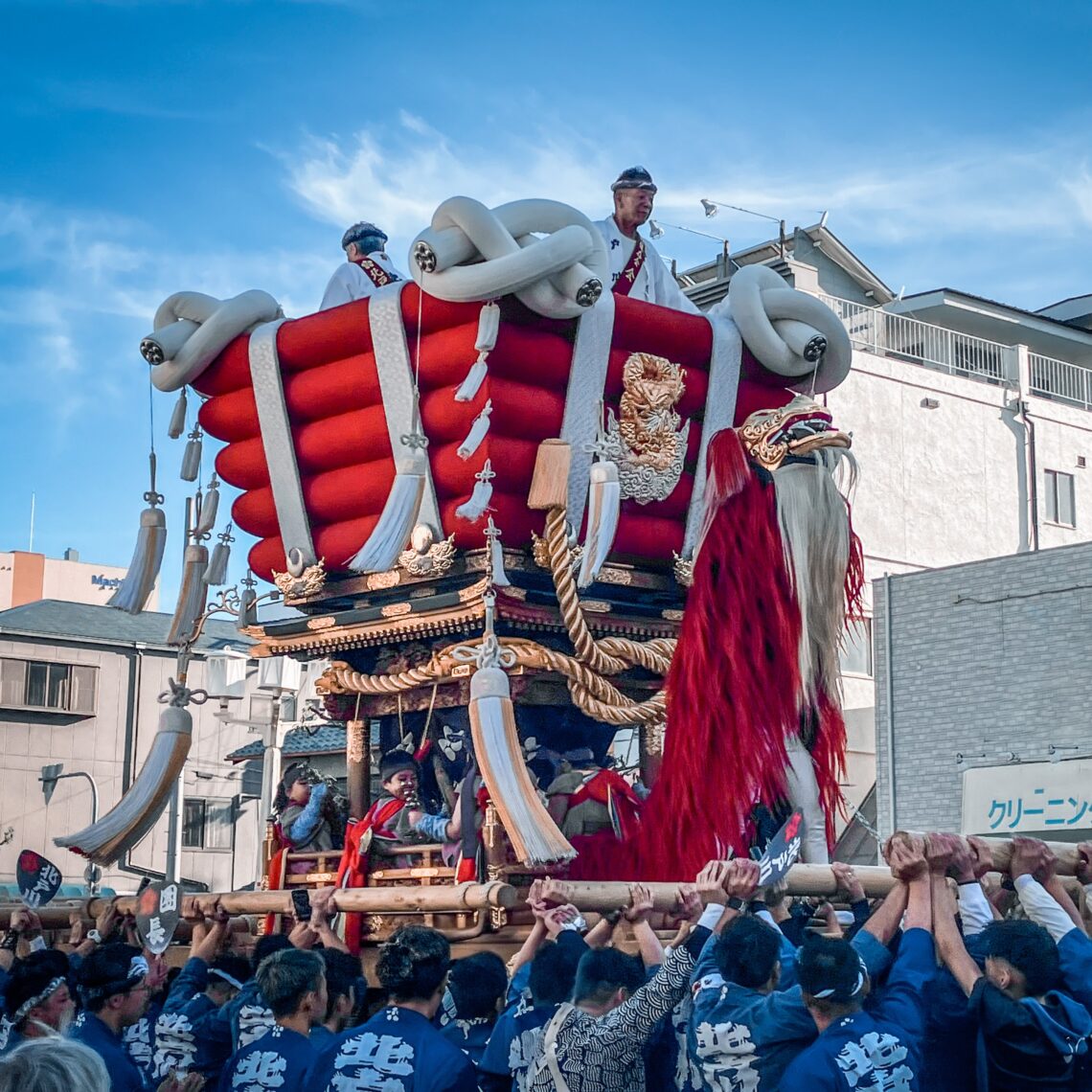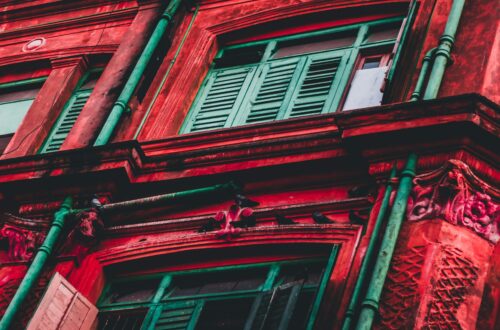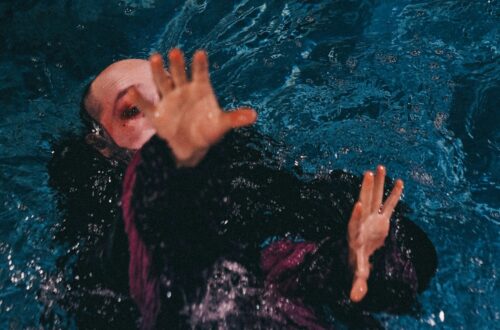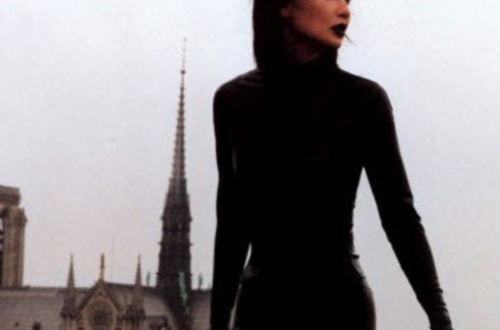Jacelyn Yap
Just neighbouring the bustling Osaka City is the lesser known Sakai City. Every October they hold their largest festival, the Sakai Festival (Sakaimatsuri). Last October I happened to be in Osaka and popped by the 51st Sakai City Festival over the weekend.
On Saturday night, despite the cold autumn rain, the rehearsals for the Taikodai Parade were in full swing. The main festival would be on Sunday, but on Saturday night the Taikodai troupes had a full-dress rehearsal around City Hall. The Taikodai (Taiko drum float) is a large float with a Taiko drum that performers would carry on their shoulders, while children in traditional wear sit inside, together with a performer rhythmically beating the drum. I’ve been to festivals in Japan before and have seen Taiko performances, but it was my first time seeing a Taikodai. There were five Taikodai troupes, all with distinctive outerwear that featured their troupe’s crest.
Seeing the Taikodai parade on Sunday was stunning — the Taikodais stood out brightly against the clear skies. Other than looking impressive, Taikodai parades were traditionally for praying for good harvests. Many streets were closed for the festival — with a total of eight zones and all-day food and entertainment. Another popular showcase was the Rifle demonstration featuring seven rifle teams from across Japan, decked out in traditional military wear.
Since Osaka was hosting Japan Expo this year, one zone was dedicated to featuring Japanese culture and Japan’s international relations. I got my morning coffee here, an espresso with a little bear face in an edible cup, called an “Ecopresso”. Japan is known for creative mascots and there were many roaming this zone, including Japan Expo’s Myaku-Myaku, a large smiling blue being with a red mane of eyeballs. They seem odd yet endearing. Visitors can also take part in traditional crafts, like the knife forging demonstration.
Japanese festivals are known for their festive food and games stalls, but Sakai Festival took it a step further by also having a “Gourmet Zone” by the river. Many stalls featured ingredients from the Senshu region. I enjoyed a quick meal while watching the packed schedule of performances, ranging from children’s dance showcases, band performances, and even a live calligraphy performance by Kaori Yasumoto. My favourite dance performance was the Suzume-Odori Dance; it was fairly common during this festival and was always full of lightness and joy.
For most of my Japan trip, I visited tourist cities like Osaka City and Kyoto City. Throughout Sakaimatsuri, there were almost no signs in English, and I got by on my rudimentary Japanese and Google Translate. Away from tourist eyes, Sakaimatsuri felt to me a genuine celebration of its people and traditions.
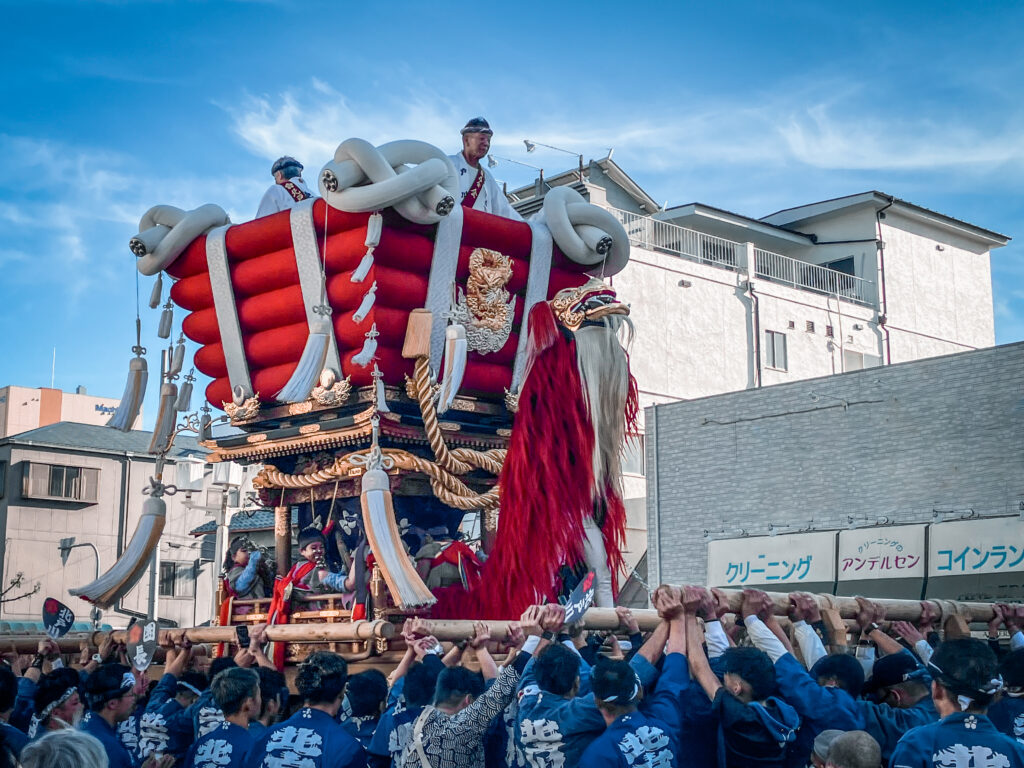
Taikodai Performance 1
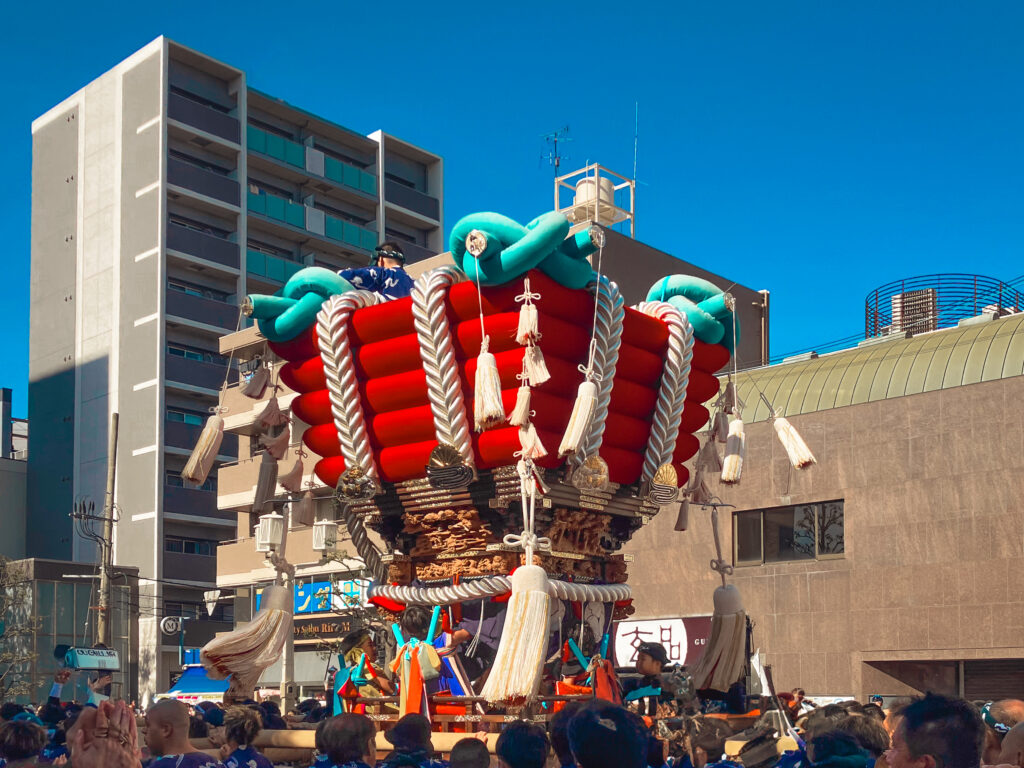
Taikodai Performance 2
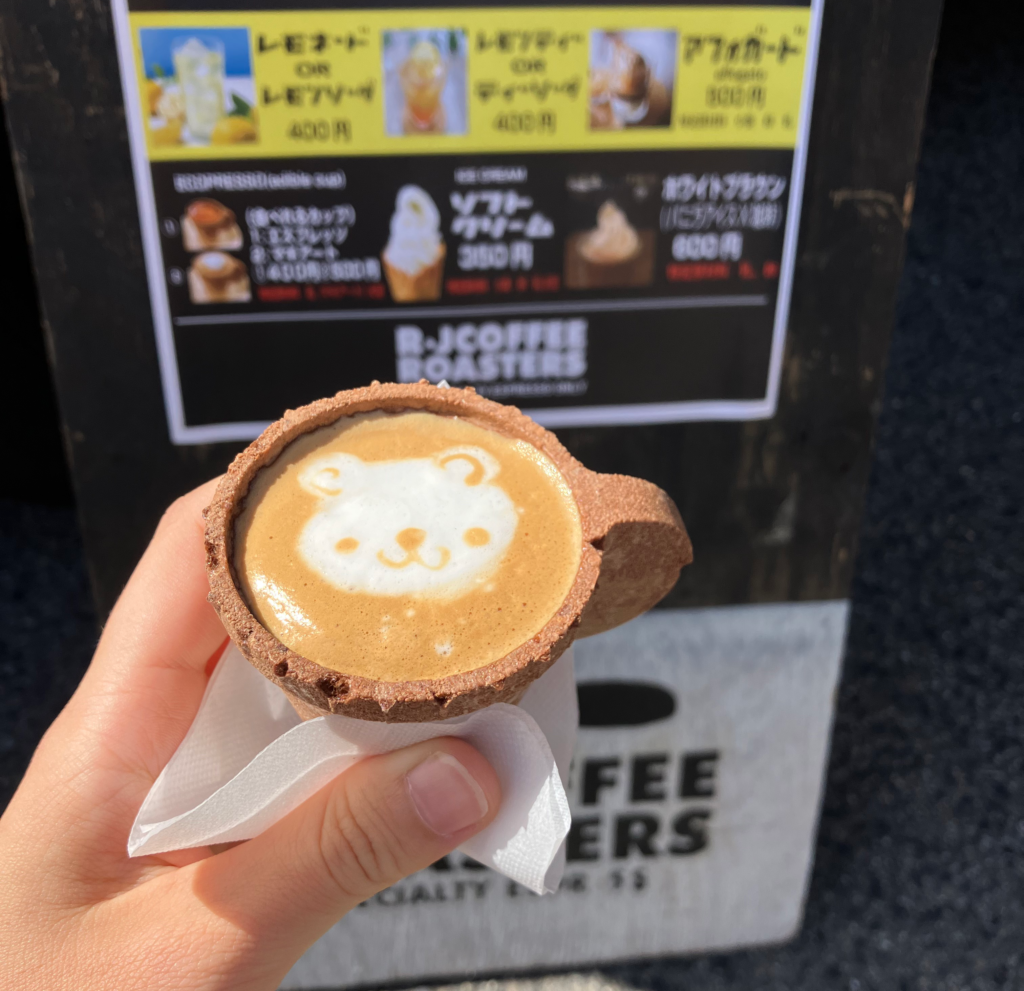
Ecopresso – Espresso in an edible cup
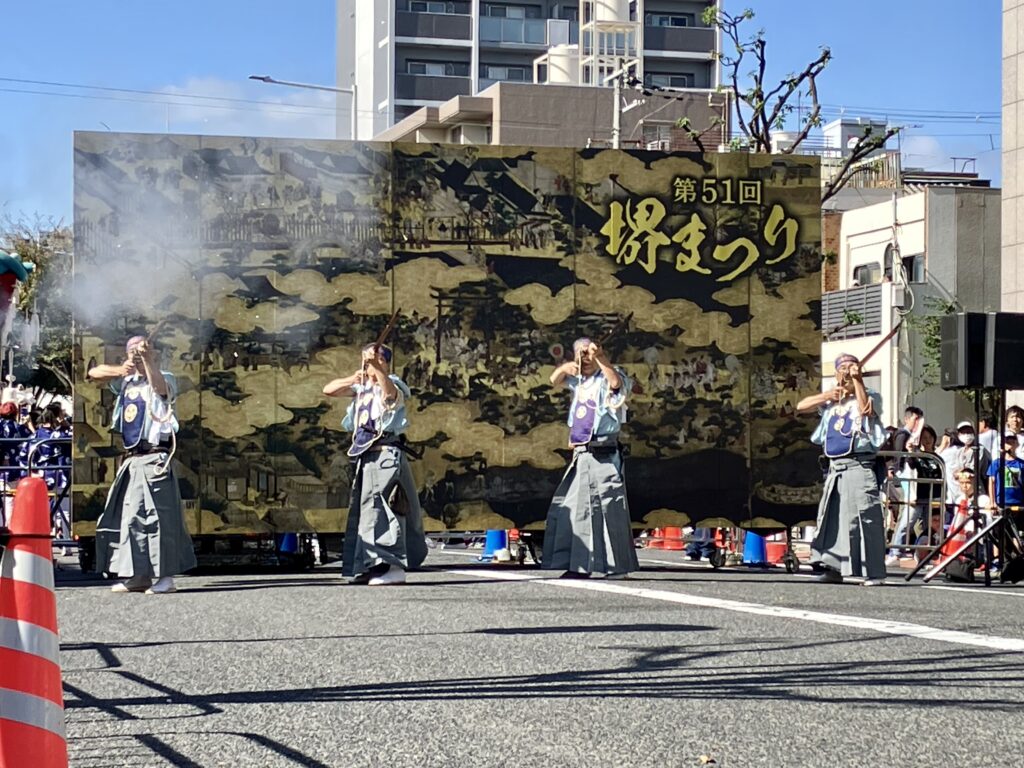
Rifle Demonstration
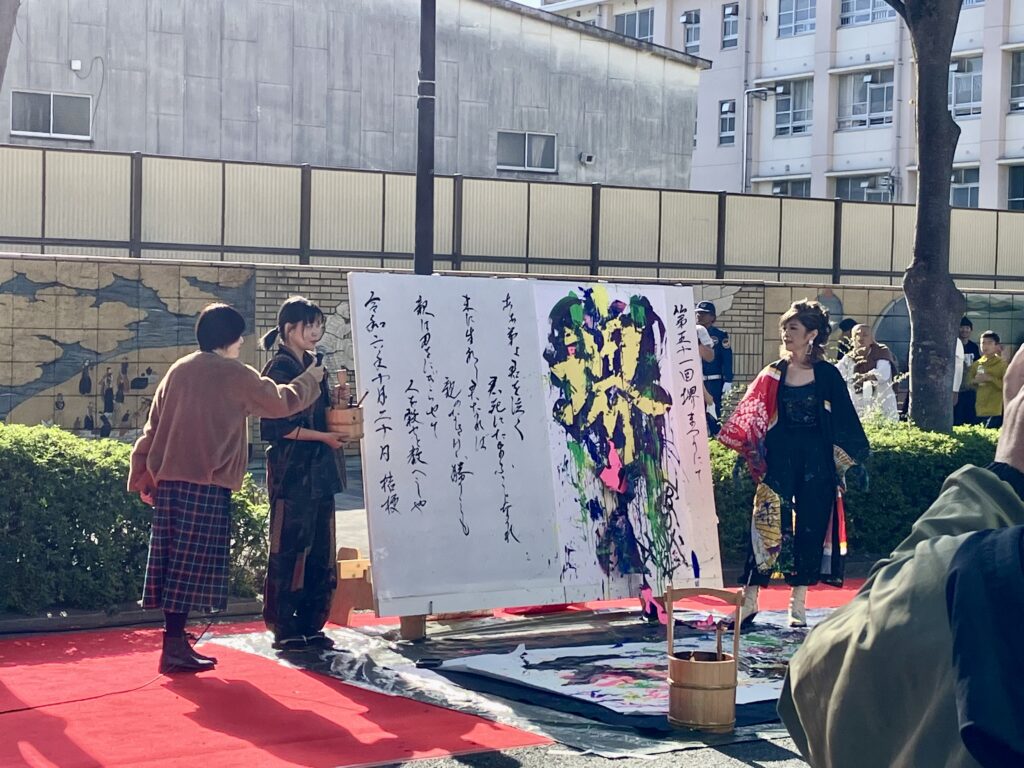
Live Painting Performance by Kaori Yasumoto
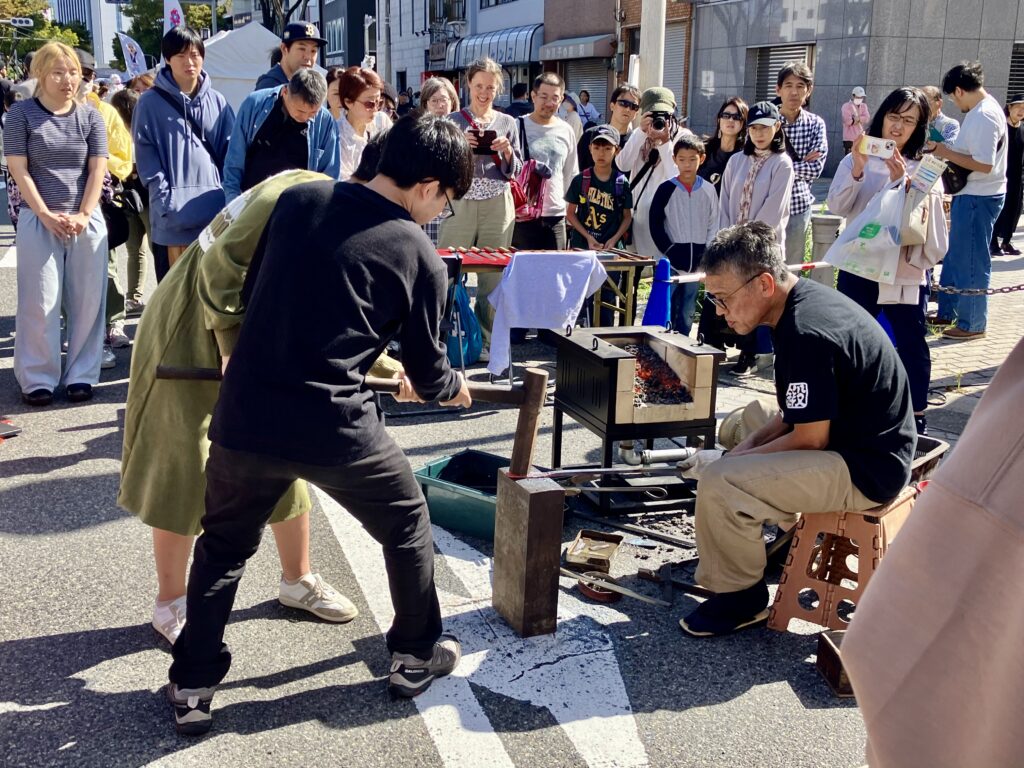
Knife-Forging Demonstration
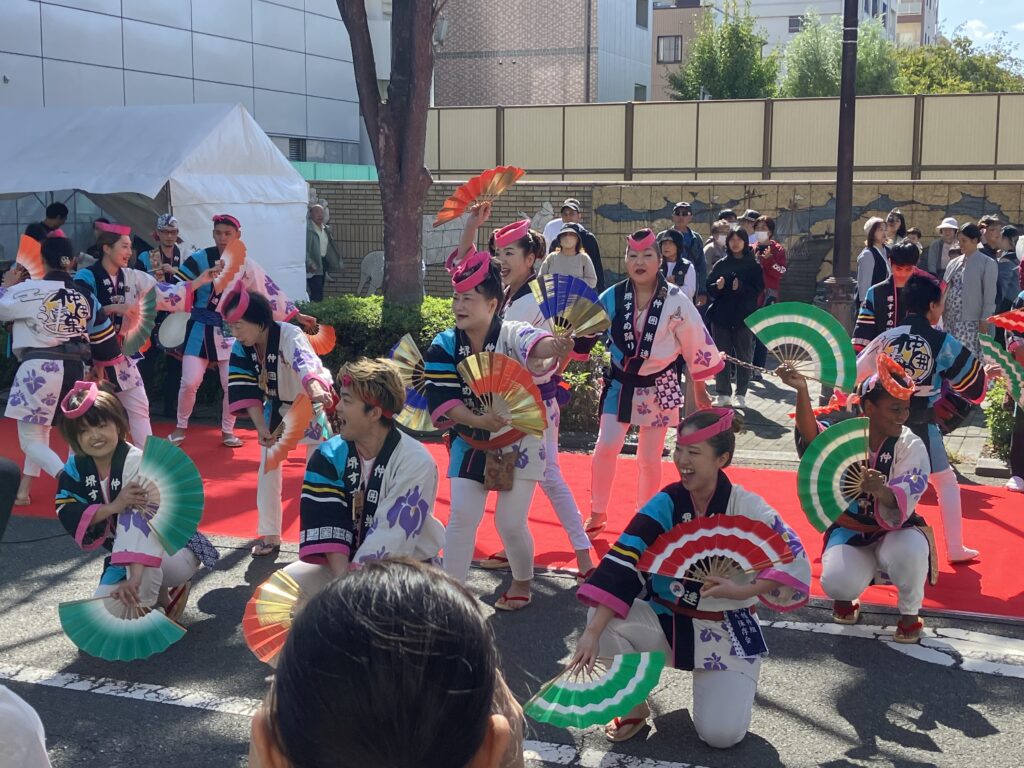
Suzume-Odori Dance
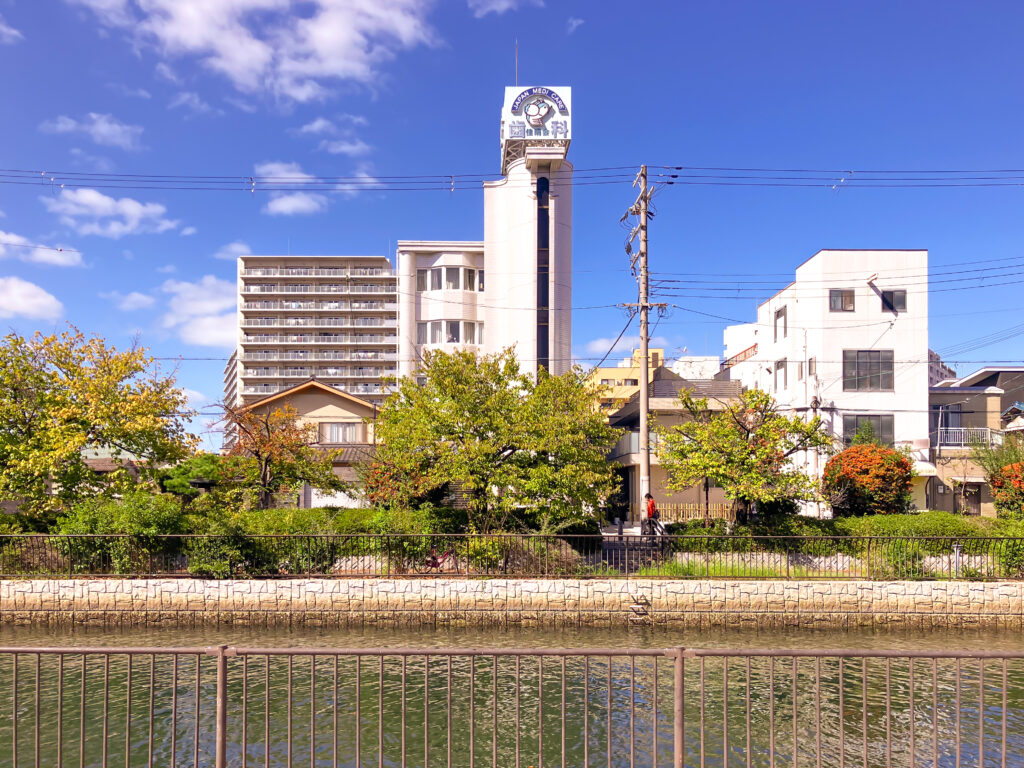
The view from the Gourmet Zone
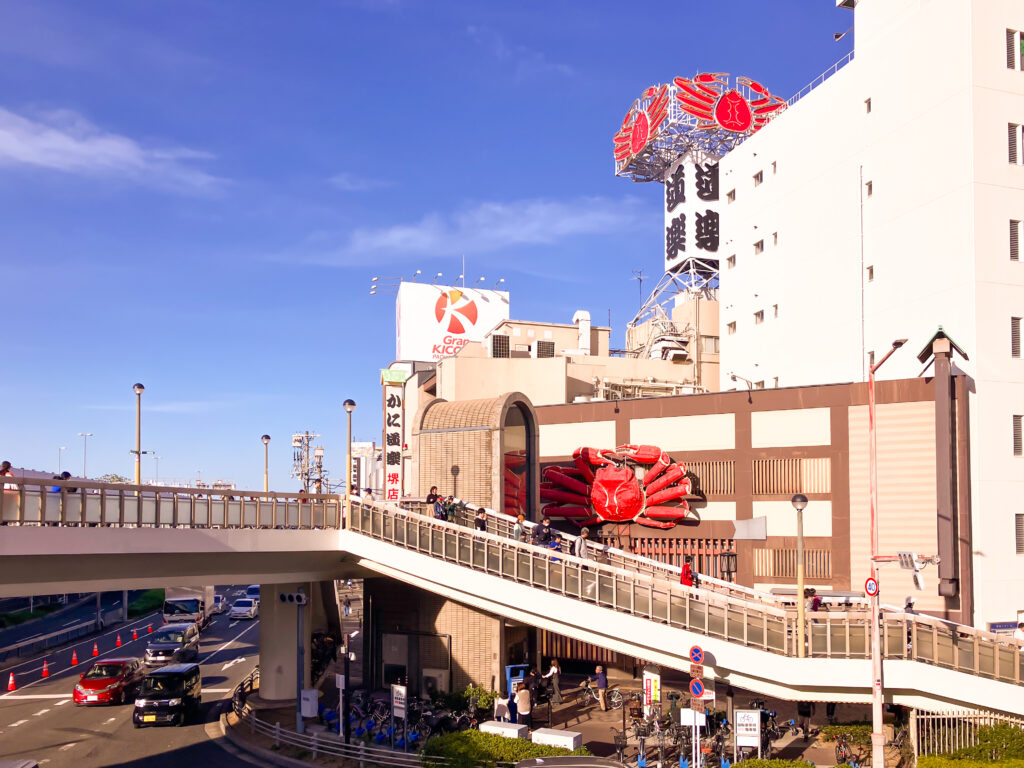
The overhead bridge from the train station to the festival streets
Additional reading:
https://www.sakai-tcb.or.jp/en/about-sakai/sakaimatsuri
https://www.sakai-tcb.or.jp/sakaimatsuri2024
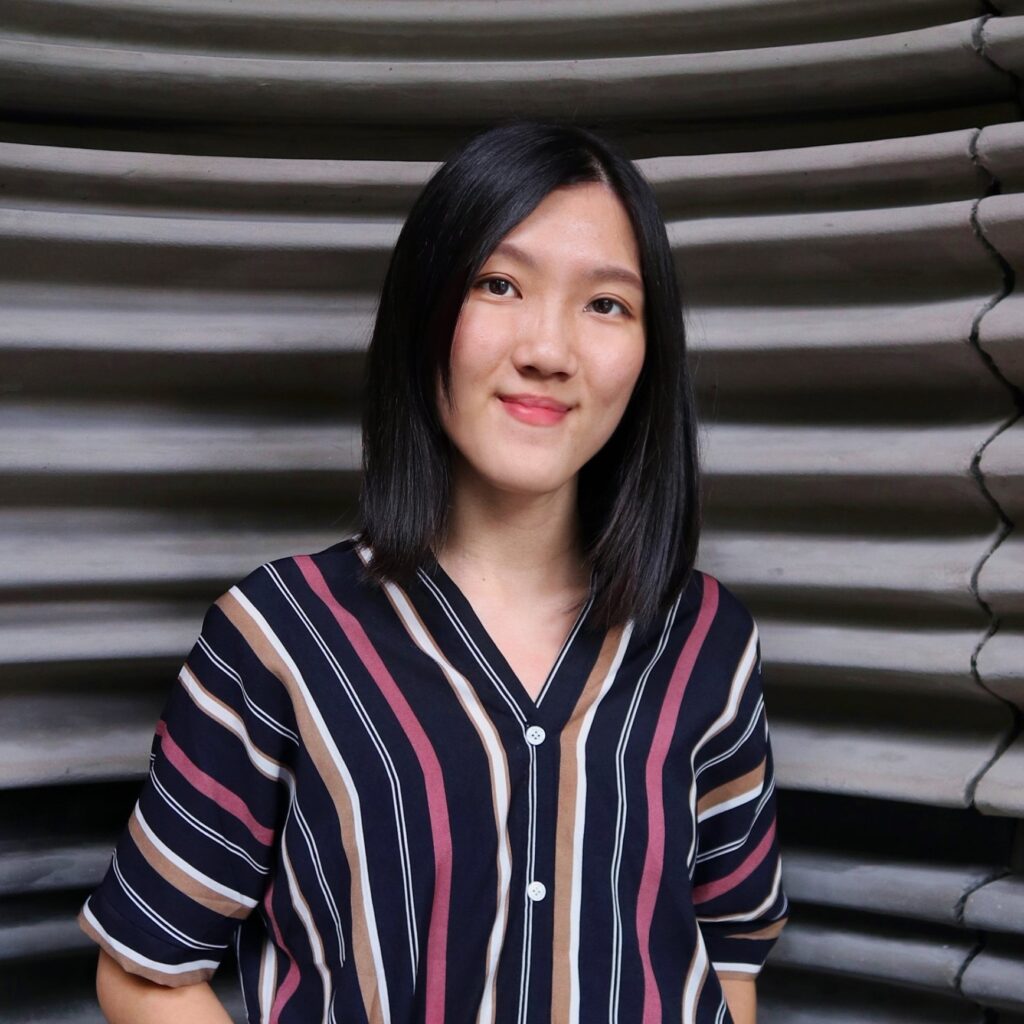
Jacelyn (she/her) is a self-taught visual artist who ditched engineering to make art because of a comic she read. Her artworks and photography have been published by the Commonwealth Foundation’s adda, Chestnut Review, The Lumiere Review, and more. She can be found at https://jacelyn.myportfolio.com/ and on IG @jacelyn.makes.stuff.
Photos by Jacelyn Yap
